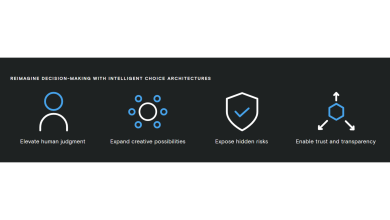
By January 2027, the Public Switched Telephone Network (PSTN), the copper-based system underpinning alarms, emergency lines, and countless local services, will be switched off. For decades, it has been the invisible infrastructure behind housing block lift phones, telecare services, and out-of-hours helplines. But it is no longer fit for purpose. It is prone to faults, costly to maintain, and incapable of supporting the resilience or flexibility that modern services demand.
At the same time, momentum is building around artificial intelligence (AI). From faster diagnostics in healthcare to predictive maintenance in housing and more responsive local services, AI is being positioned as a transformative force. The NHS 10-Year Plan, for example, puts AI and data at the centre of its vision for modernised, patient-centred care.
But here’s the hard truth: AI cannot succeed if it is built on outdated, analogue foundations. Without fast, secure, and interoperable digital networks, even the most ambitious AI programmes will stall, delivering pilots that excite but fail to scale. With them, however, councils and health bodies can unlock AI’s full potential: services that anticipate need, respond in real time, and ultimately improve lives.
Continuity of Care Depends on Infrastructure
Continuity of care is about more than health and social care; it is about ensuring that essential services remain reliable and coordinated in moments of need. Consider emergency response. Today, many police and fire control rooms still depend on analogue systems that cannot integrate live data streams from sensors, drones, or traffic cameras. Digital infrastructure opens the door for AI to analyse incoming 999 data in real time, triaging incidents and routing responders more efficiently.
Or take environmental resilience. Flooding is one of the most pressing risks for communities across the UK, yet many monitoring systems still rely on outdated analogue connections. This slows down alerts and hampers data sharing between agencies. With digital-first networks, AI models could process sensor data street by street, predict risks earlier, and automatically trigger warnings for residents or reroute transport before an area becomes unsafe.
The point is clear: without robust digital systems, continuity of care across all essential services – from emergency response to environmental safety – remains fragile. With them, AI becomes a powerful tool not just to react to crises, but to prevent them.
Lessons from the NHS
The NHS’s 10-Year Plan illustrates both the scale of ambition and the risks of moving too quickly without fixing the basics. Its vision of a “doctor in your pocket” through an expanded NHS App, powered by AI and linked to a Single Patient Record by 2028, is compelling. But its success will depend on local health and care systems being digitally compatible, with infrastructure strong enough to support the data flows, bandwidth, and reliability that AI demands.
The lesson for local authorities is clear: bold AI programmes must be grounded in equally bold infrastructure upgrades. Otherwise, innovation risks outpacing the systems needed to support it.
What Councils Should Do Next
Local authorities should treat the digital transition as a chance to lead, not simply react. That means:
- Auditing dependencies: Mapping every service still reliant on analogue connections, from alarms to call centres.
- Stress-testing replacements: Ensuring digital alternatives can withstand real-world pressures and safeguard continuity of care.
- Collaborating widely: Aligning with health bodies, housing providers, emergency services, and suppliers to avoid fragmented approaches.
- Investing in people: Training staff so they can operate new digital and AI systems with confidence.
- Planning strategically: Embedding digital resilience into procurement and infrastructure planning for the long term.
Handled this way, the analogue switch-off is not a disruption but a platform for smarter, more resilient services.
The Opportunity Before Us
Public sector leaders are right to see AI as a transformative opportunity. But they must resist the temptation to race ahead without preparing the ground. Infrastructure is not the “boring” part of digital transformation – it is the part that determines whether AI investments succeed or fail.
The retirement of the analogue network in 2027 is more than a technical deadline. It is a once-in-a-generation chance to build the digital foundations that will allow AI to deliver on its promise for public services. Councils that act now will not only avoid last-minute disruption; they will create the conditions for intelligent, integrated, and inclusive services that truly serve their communities.
The message is simple: before investing in intelligence, invest in infrastructure.



